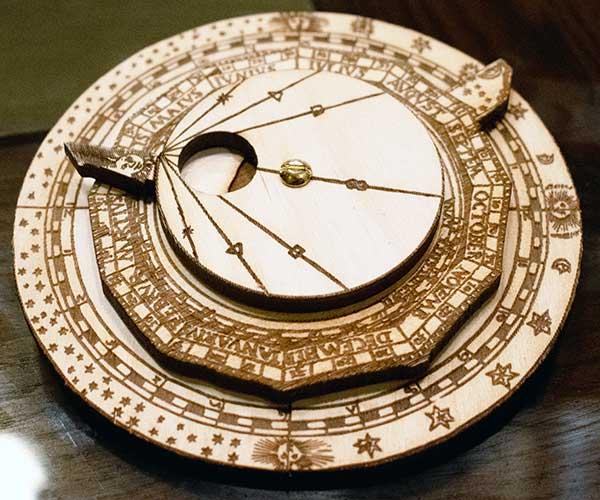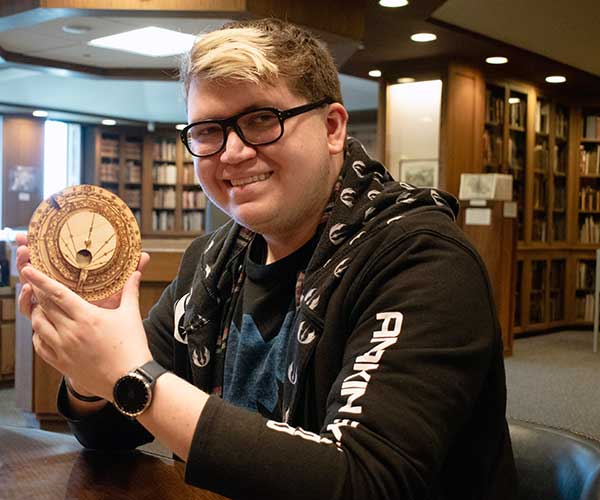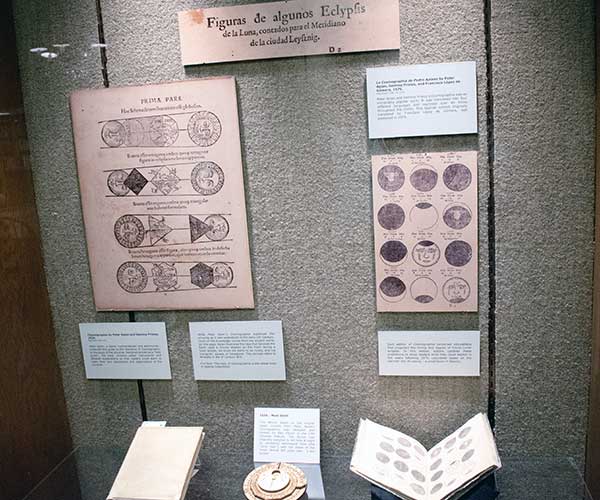
by Library News

With the eclipse happening on April 8, UTA Special Collections has a unique item they are giving away to mark this historical moment.
Evan Spencer, Public Services Librarian and Archivist, worked with students Alex Patrón and Travis Talkington to create a replica of a paper volvelle from the 16th century.
The creation of the volvelle was a collaboration between UTA Libraries Special Collections and Dr. Kim Breuer's History of Medieval Technology and Scientific Thought class.
A volvelle was an astrological device used to tell time at night by combining astrological time or lunar hour with the moon's shape.
Alex stated that the device played a role in people's belief in astrology, which involves the study of the movements and positions of celestial bodies such as plants, stars, or nebulas in connection with a person's life.
"A volvelle is like a sundial, but instead of just calculating the time, it is more in tune with astrology. Back in the 1500s, astronomy and astrology were basically the same thing," Alex said. "The idea was there was a different planet every hour reigning over the earth that determined your life path."

Alex Patrón holds a volvelle created in the UTA Libraries FabLab.
The device was replicated from the 1534 edition of Peter Apian's book "Cosmographia," which is the oldest book in Special Collections.
According to the Mathematical Association of America's website, "Cosmographia" covers astronomy, geography, cartography, navigation, and instrument making. It was one of the first European books to depict and discuss North America. It included movable volvelles, allowing the readers to interact with and use some of the charts and instrument layouts shown in the text.
"This device calculates when the moon is going to be in line with the Earth," Alex said. "You can use that reference, the moon's point in space relative to the earth, to calculate the position of all the other planets positions."

Peter Apian's book "Cosmographia" is displayed in UTA Libraries Special Collections.
To create the volvelle scans were made of a paper version that was on hand. These scans were then used to develop a computer-aided design file. This file was then used to manufacture each of the three disks of the wooden volvelle in the FabLab. This process took about five hours of work over several days.
People who wish to have one of these volvelles can fill out an entry form by stopping by Special Collections. The drawing takes place after the total solar eclipse; people don't have to be present to win.
Entries for the giveaway can also be made through the Special Collection's social media channels, Facebook, Instagram, or X by commenting on the giveaway post and giving a like on it. Entries on social media have to be made before Noon on April 8.
Add new comment